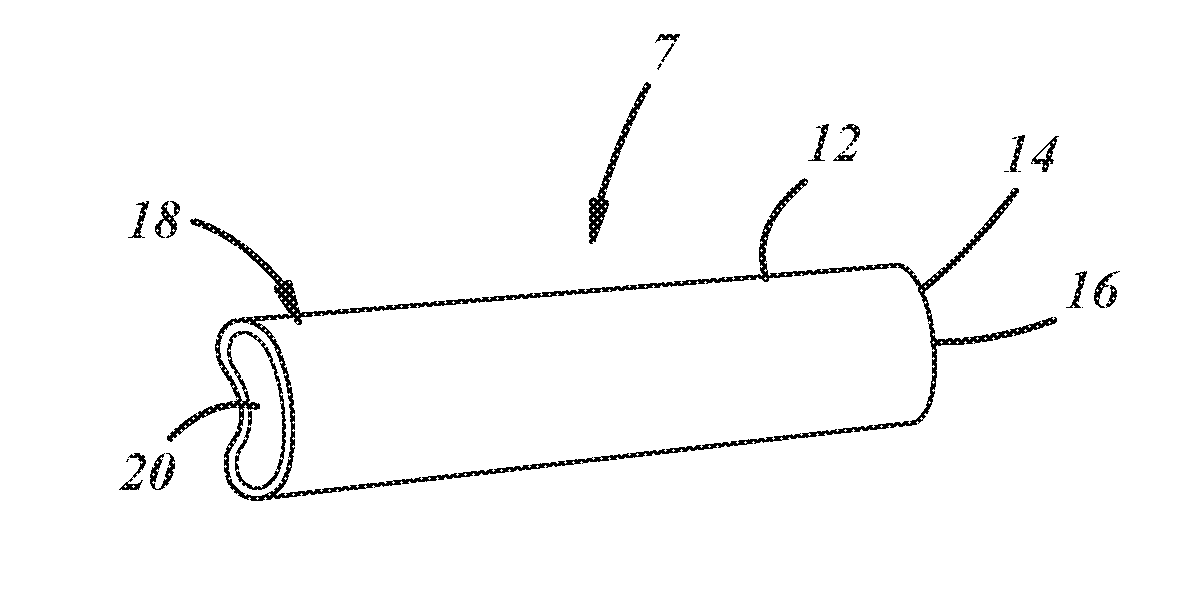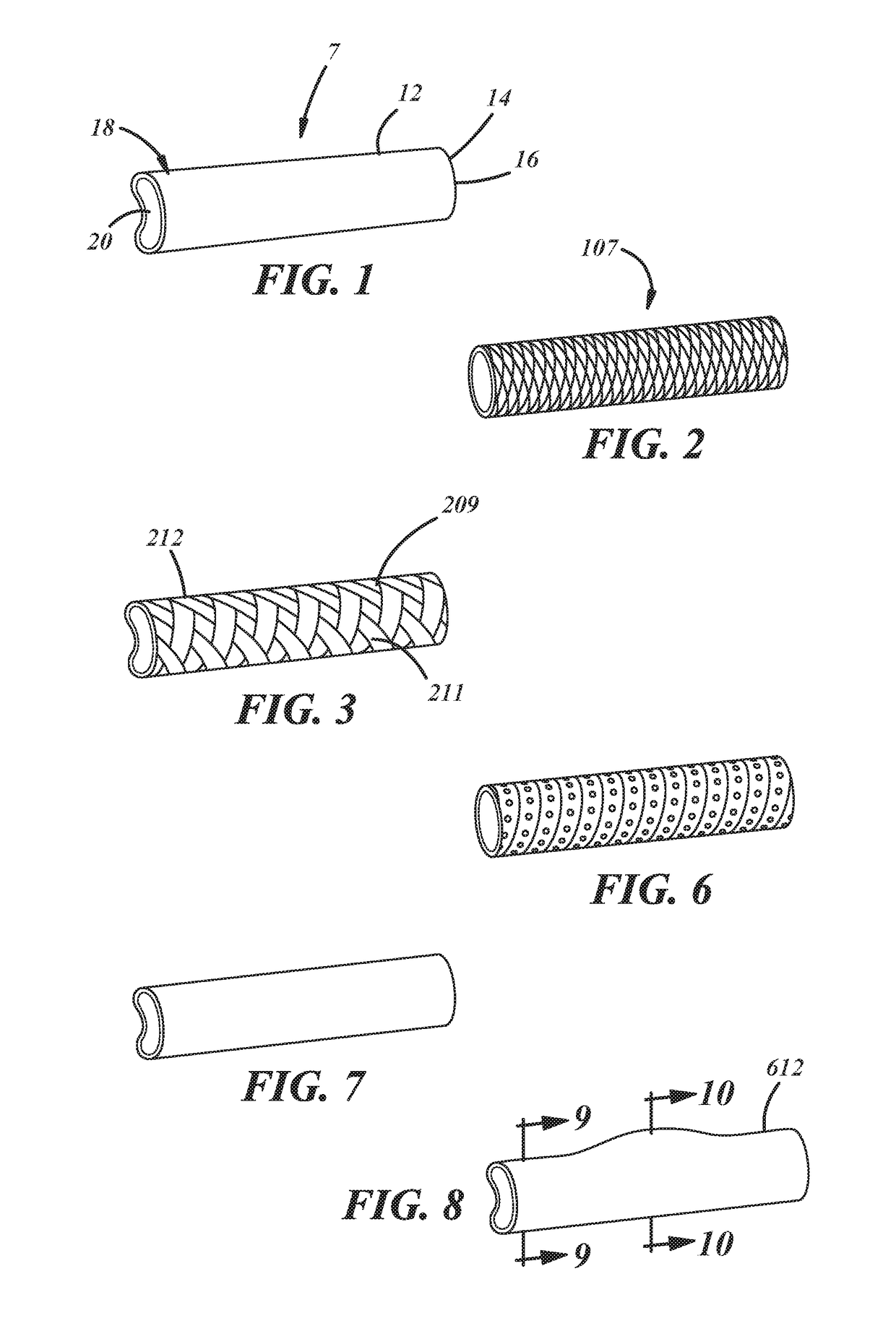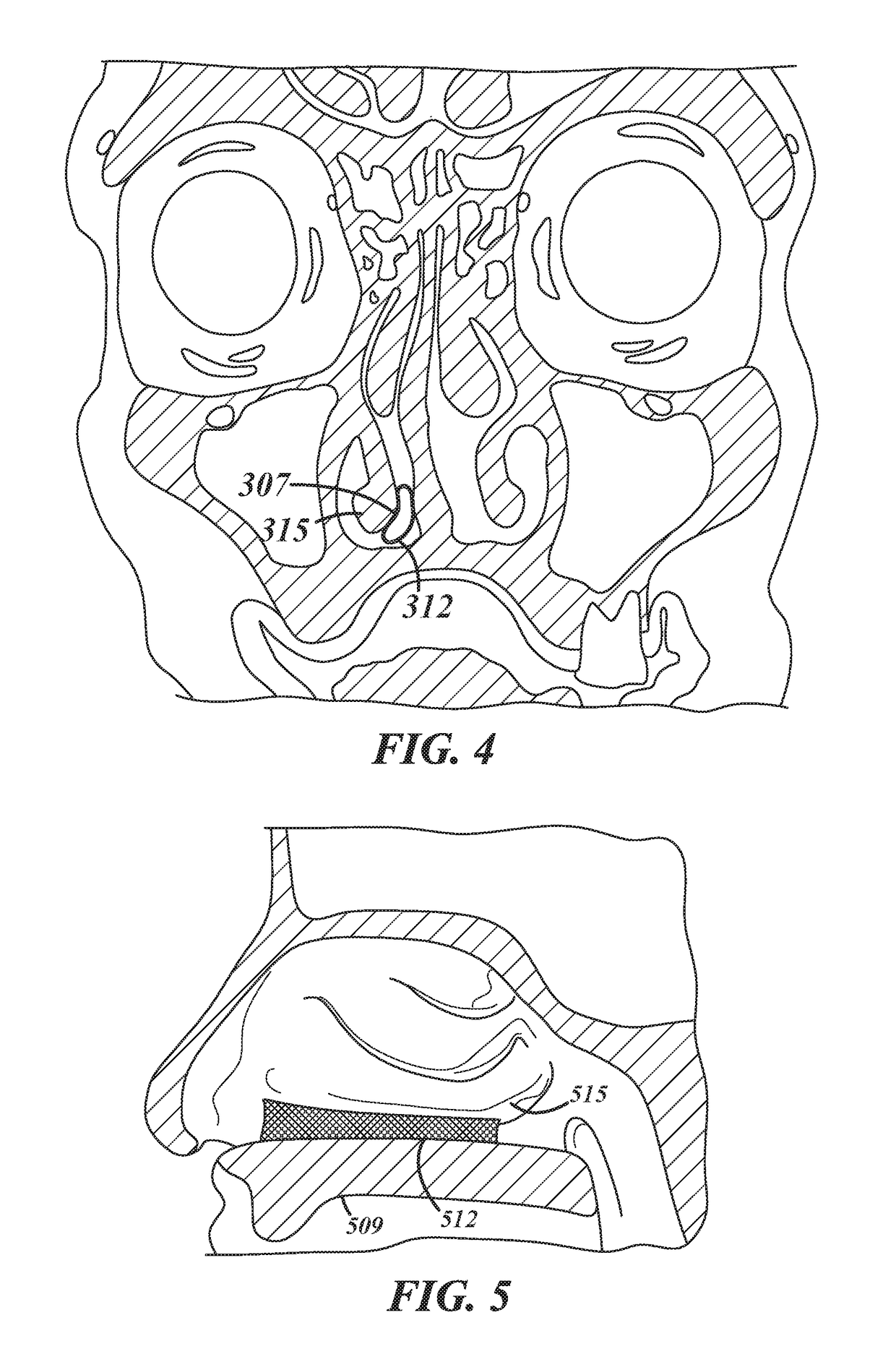Nasal device to increase airflow
a technology of airflow and nasal passage, which is applied in the field of nasal passage to increase airflow, can solve the problems of partial or complete obstruction, difficulty in breathing, and assortment of secondary ailments, and achieve the effect of preventing nasal septal deviation, preventing obstructive airways, and optimal nasal passage shap
- Summary
- Abstract
- Description
- Claims
- Application Information
AI Technical Summary
Benefits of technology
Problems solved by technology
Method used
Image
Examples
Embodiment Construction
[0038]The following description of the preferred embodiment(s) is merely exemplary in nature and is in no way intended to limit the invention, its application, or uses.
[0039]Referring to FIGS. 1-8, a device 7 to increase airflow in a nasal passage is provided. The device is provided by a hollow tubular member 12 having a posterior end 14 and orifice 16 and anterior end 18 and orifice 20. The anterior end 18 has a slightly larger diameter than the posterior end 14. The tubular member has a wall thickness equal or less than 2 mm and preferably 0.1 to 1.5 mm. The tubular member 12 has a diameter less than that of the nasal passage. The tubular member can have a circular, kidney, or other cross-sectional shape.
[0040]The tubular member 12 has a shape which is rigid enough to be self-supporting. Typically the shape of the tubular member is that of a flexible preform. The length of the tubular member 12 will typically be between 25-40 mm depending upon the size of the patient. The tubular ...
PUM
 Login to View More
Login to View More Abstract
Description
Claims
Application Information
 Login to View More
Login to View More - R&D
- Intellectual Property
- Life Sciences
- Materials
- Tech Scout
- Unparalleled Data Quality
- Higher Quality Content
- 60% Fewer Hallucinations
Browse by: Latest US Patents, China's latest patents, Technical Efficacy Thesaurus, Application Domain, Technology Topic, Popular Technical Reports.
© 2025 PatSnap. All rights reserved.Legal|Privacy policy|Modern Slavery Act Transparency Statement|Sitemap|About US| Contact US: help@patsnap.com



